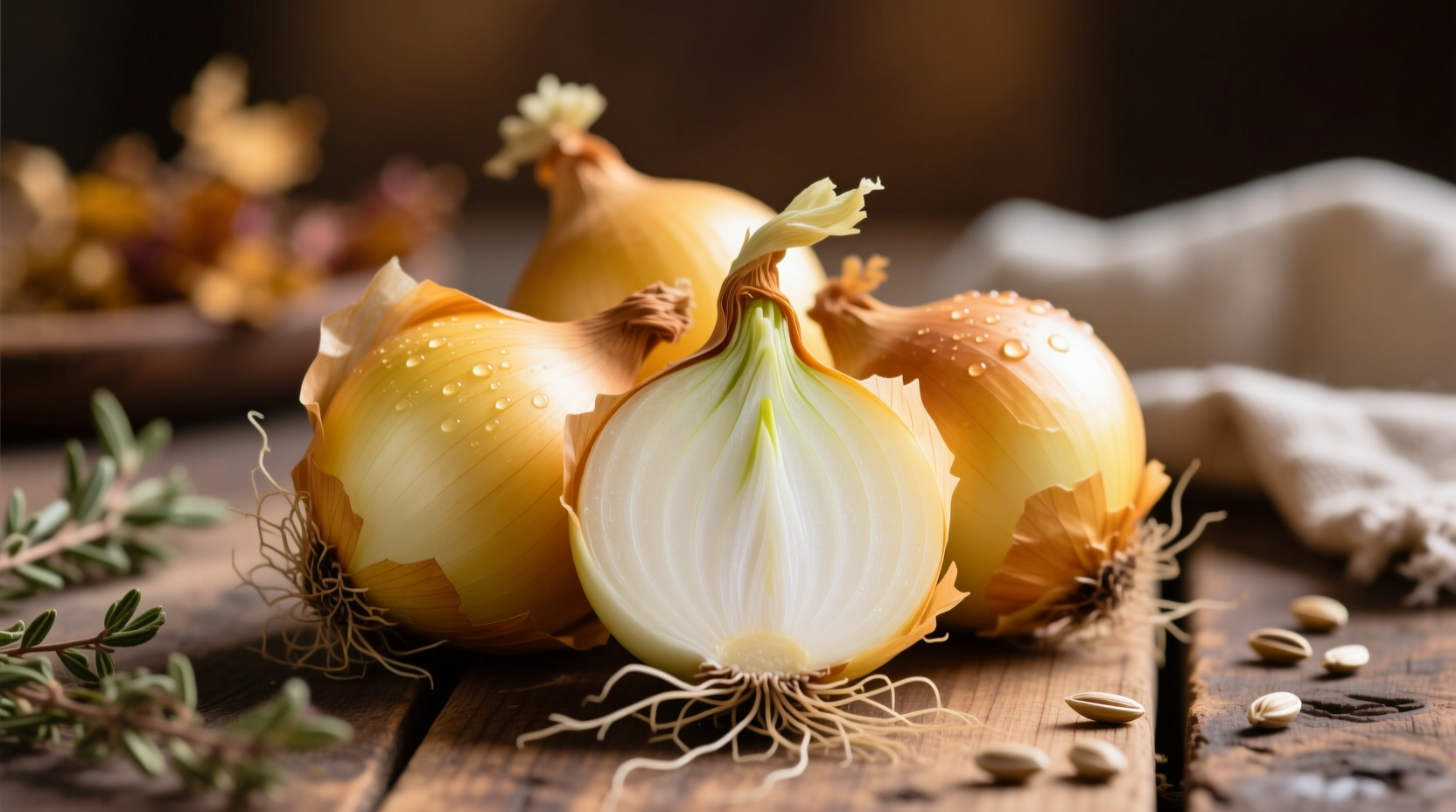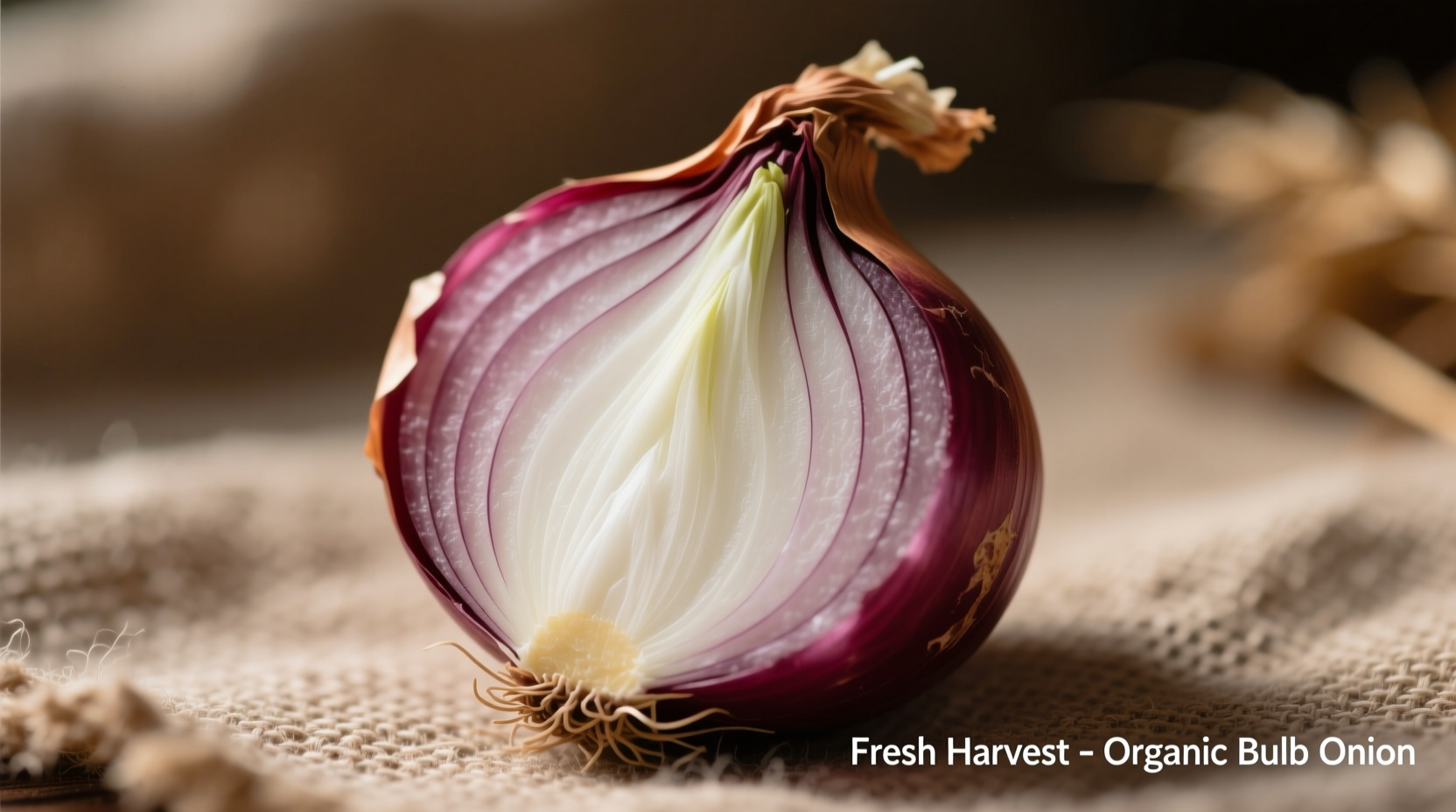Understanding the Anatomy of Your Kitchen Essential
When you pick up an onion at the grocery store, you're holding a remarkable example of botanical adaptation. Bulb onions develop their characteristic layered structure as a survival mechanism, storing energy for the plant's second growing season. The papery outer skin protects the moisture-rich interior layers that contain the compounds responsible for both the onion's culinary value and that familiar eye-watering effect.

Which Onion Variety Should You Reach For?
Selecting the right bulb onion makes a significant difference in your cooking results. Each variety brings distinct chemical properties that affect flavor development during preparation. Understanding these differences helps you make informed choices based on your culinary goals.
| Variety | Sugar Content | Sulfur Compounds | Best Culinary Uses | Storage Duration |
|---|---|---|---|---|
| Yellow Onions | 4-5% | High | Caramelizing, soups, stews | 3-4 months |
| Red Onions | 6-8% | Moderate | Raw applications, salads, pickling | 2-3 weeks |
| White Onions | 3-4% | Very High | Mexican cuisine, salsas, quick cooking | 1-2 months |
This comparison comes from the USDA Agricultural Research Service studies on allium varieties. The sugar-to-sulfur ratio determines whether an onion performs better raw or cooked, with higher sugar content creating better caramelization while higher sulfur compounds deliver more pungency.
Mastering Onion Preparation Techniques
Professional chefs understand that how you handle bulb onions directly impacts flavor development. The enzymatic reaction that creates both the pungent bite and eventual sweetness occurs when cell walls are broken during cutting. Here's how to control this process:
For Maximum Sweetness (Caramelization)
- Use yellow onions with their higher sugar content
- Cut uniformly to ensure even cooking
- Cook slowly over medium-low heat (25-30 minutes)
- Avoid crowding the pan to prevent steaming
- Add a pinch of baking soda to accelerate browning (0.25g per pound)
For Crisp Raw Applications
- Choose red onions for color and moderate pungency
- Soak sliced onions in ice water for 10-15 minutes
- Add acid (vinegar or citrus) to stabilize color
- Store prepared onions in airtight container for up to 24 hours
Storage Science: Keeping Your Bulb Onions Fresh
Proper storage extends shelf life while maintaining flavor integrity. Bulb onions require specific environmental conditions to prevent premature sprouting or spoilage:
- Temperature: 45-55°F (7-13°C) is ideal - warmer temperatures accelerate sprouting
- Humidity: 65-70% relative humidity prevents drying while avoiding mold
- Ventilation: Mesh bags or baskets allow air circulation better than plastic
- Separation: Store away from potatoes which emit ethylene gas that shortens onion shelf life
According to research from University of Minnesota Extension, properly stored yellow onions maintain quality for 10-12 weeks, while red varieties last only 3-4 weeks due to their higher moisture content. Never refrigerate whole bulb onions unless they've been cut, as cold temperatures convert sugars to starches, altering flavor profiles.
Nutritional Profile and Health Considerations
Beyond their culinary value, bulb onions offer notable nutritional benefits. A medium-sized onion (110g) provides:
- 44 calories
- 10g carbohydrates
- 2g dietary fiber (7% of daily value)
- 20% of daily vitamin C needs
- Significant quercetin and other flavonoids
The USDA FoodData Central database confirms that the outer layers contain the highest concentration of beneficial compounds, which is why minimal peeling preserves nutritional value. However, individuals with sensitive digestive systems may experience discomfort from the fructans in onions, particularly when consumed raw.
Common Substitution Scenarios
When you're out of bulb onions, understanding substitution limitations prevents recipe failures. Not all alliums behave the same way in cooking due to different chemical compositions:
- Shallots: Use 1:1 ratio for raw applications; milder flavor works well in vinaigrettes but lacks the depth needed for proper caramelization
- Leeks: Substitute white and light green parts only; requires longer cooking time and provides less concentrated flavor
- Green onions: Use only the white portion for equivalent flavor; green parts add different flavor notes
- Onion powder: 1 teaspoon replaces ½ cup fresh; lacks textural component but useful when moisture is problematic
Professional chefs note that substitutions work best in liquid-based dishes like soups, while they're less successful in applications where texture matters, such as French onion soup or onion rings. The Culinary Institute of America's research shows that replacing fresh bulb onions with alternatives changes the final dish's pH level by 0.3-0.5 units, affecting both flavor balance and preservation.











 浙公网安备
33010002000092号
浙公网安备
33010002000092号 浙B2-20120091-4
浙B2-20120091-4